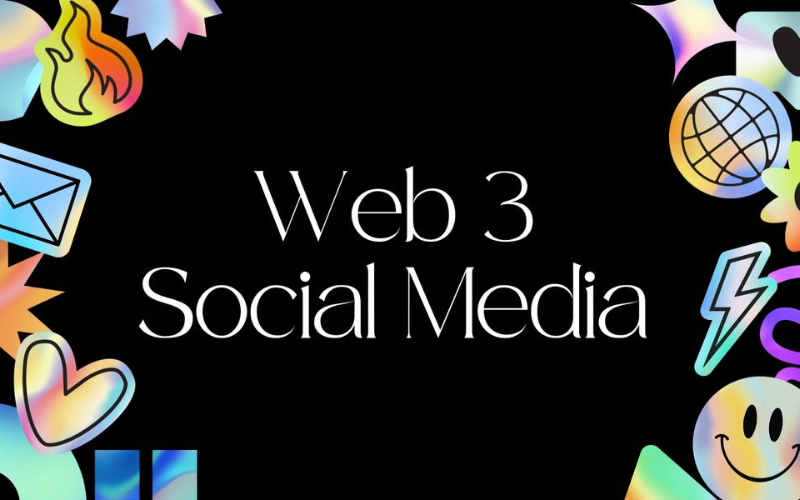How Web3 is changing Social Media And Online World?
If you’re attentive, you can experience some of the digital changes the world is going through. Those slowed down in the early 2000s until the covid-19 epidemic in 2015, which sped up the adjustment. Despite the pandemic serving as a spur for digital adjustment, there were previously set strategies ready to be carried out.
One previously established strategy to take the internet to Web3 involved internet consumption. Web3 development company was supposed to transform how social media platforms and cryptocurrency exchanges operate.
Although Web3 has several advantages, most internet users still need to become familiar with them. Therefore these advantages are only known to professionals. Now we will discuss Web3 and how it affects social media. Here is some information on Web 3.0 before we continue.
What is Web3?
Web3 commonly referred to as the decentralized internet, is a development of web2 that you are already acquainted with. To be clear, there are two internet eras preceding Web3, with web 1.0 being the first.
Web 1.0 is sometimes called the “READ-ONLY” internet era, in which users were only given outputs and no opportunity for input. You could not upload anything to the internet during this era. You could only read corporate information.
Web 1.0 underwent evolution, becoming web2 with input and output functions. Web2 allows for the sending and receiving of data via the internet. This web2, well-known to everyone, provides the foundation for many social media sites.
Web 2.0 increases connections via social media platforms, which has advantages for users. The improved internet services in this web era were supposed to make the globe seem smaller.
Additionally, several businesses formed their ventures at this time after jumping on the project. Facebook, WhatsApp, YouTube, and several other experiences are among them. These social media initiatives made it possible to exchange material at once.
Web 2.0 would have several flaws, even if it seemed wonderful. One of the failures of web 2.0 was the perception that the network slowed down because a lot of data was being exchanged at once on the network.
Web 2.0 also needed help to guarantee consumers’ complete data privacy. Controlling entities like Amazon, Apple, Meta, Microsoft, and Google may readily obtain private information from consumers. Web 2.0, thus, wasn’t based on a decentralized framework. There is a need to improve it as a result. Consequently, web 2.0 evolved into web 3.0.
Learn more about the transition from Web 2.0 to Web 3.0
Blockchain technology is the foundation of web 3.0, which addresses web 2.0’s lack of structure and order. Web 3.0 will impact social media and its involvement, just as prior traps did.
Impact of Web3 On Social Media
Web 3.0 will provide all the benefits of a decentralized system since it is based on decentralized blockchain technology. These aspects of web 3.0 are greatly influenced by these decentralized blockchain technology elements, which also impact how social media is used in web 3.0 environments.
Data Security
Data privacy means a third party won’t be involved in your business. You are free to make decisions, keep your information private, and share the information you choose. Additionally, this function aids in resolving the problem of restricted free expression caused by web2.0. On Web3, sharing material and people is possible without worrying about repercussions.
Privacy While Preventing Hacking
Web 3.0 will provide you with hacker security, much like other decentralized systems. Since the system doesn’t involve a third party, it is difficult to hack the system’s design and accounts.
Peer-to-peer networking will also be available in Web3, enabling connections and networking without being intercepted.
Web 3.0 will also provide users with total anonymity. To connect and communicate, users might even develop a new value system.
The mining approach that is a part of web 3.0 has an important impact on social media. Users’ postings, comments, and favorites may be analyzed by Web 3.0. This will make it simple to recommend content to consumers and guarantee a positive user experience.
Web3 will also greatly influence how data is stored in data hubs. Web3 will let users store information on decentralized data centers, while Web2 saves information on centralized storage like Google, Microsoft, and Amazon. However, making a power storage system poses a problem with data storage on decentralized storage hubs.
Web3 will also provide users complete anonymity since they may create a unique identity and be the only ones with access to their assets and data. By doing this, people can access their purchases at any moment and don’t require the consent of other parties. According to experts, you will have unfettered access to your assets and services from anywhere, and they will only belong to you.
Learn more about Web3 currencies right now.
Finally, you will have access to 3D data and be able to participate in virtual events on Web3. You may participate in virtual events by playing games, going to places, leaving remarks, and responding to comments. In the Web3 era, you may join in historical sites and live events.
Conclusion
Web3 is on its way in a major way. Web3 offers a bright future because of its extensive use of blockchain technology, semantic web, artificial intelligence, and excellent visuals. Even if you could feel overjoyed, you need to be aware of Web3’s repercussions. Although we discussed Web3’s broader effects, we concentrated on how it would affect social media.
Massive changes will occur in social media, impacting how web3 social media app development helps businesses. You’ll notice that contents are now independent, which is one difference you’ll encounter. On Web3, it is possible to publish materials that discuss government inefficiencies while being insulated from their operations. The government cannot take down your material, in other words.
Furthermore, you will have the option of uploading private data. Therefore, you don’t need to be concerned about hackers. The inability to easily regulate the ecosystem itself is one of the Web3 drawbacks, but everything has its drawbacks.

